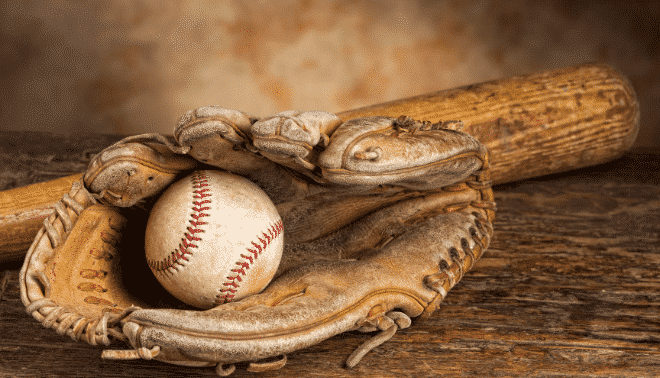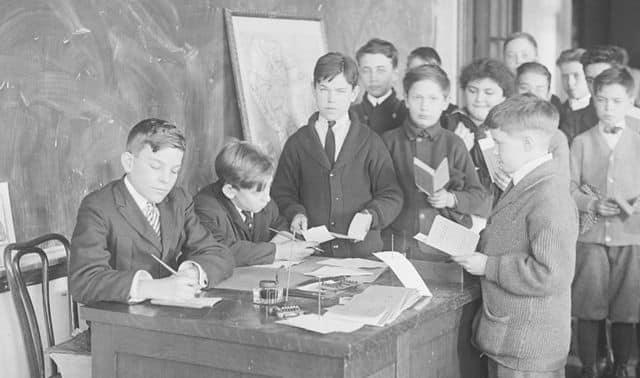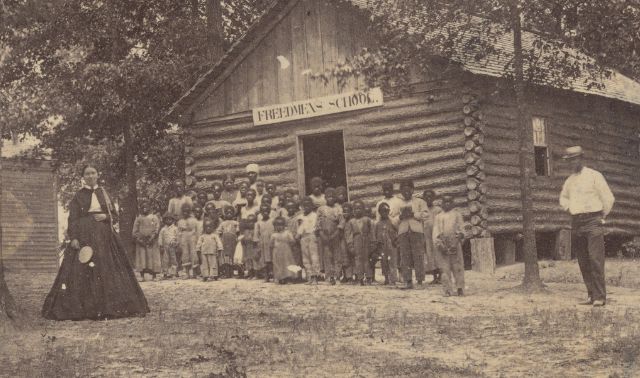
Jan Began is all about genealogy, not sports. Her husband Joe is pretty much the opposite. But their two interests intersected a few years ago, when she turned her research focus to Joe’s early life, before they met.
“I decided to learn what he did in sports,” Began says. She didn’t have to dig very deep: he’d kept a surprising amount of memorabilia. A high school yearbook lists his activities, including football, track and intramural basketball. A photo from an alumni game lists names of players written on the back. A playbook notes moves on the football field. “It’s an old two-ring notebook that’s falling apart. To me, it looks like a bunch of Xes and Os—I have no clue what it means,” Began says. “He doesn’t keep too much, but of all the things he could keep, he kept that. That tells me how important this was to him.”
She recalls that her husband’s father, an amateur boxer, gave him the nickname “Champ.” He played community basketball into his 40s, and his children also became athletes. Now his grandchildren are growing up doing the same. “Joe goes to almost every one of their games,” Began reports. “This is a sports family.”
As our ancestors’ quality of life improved and they gained leisure time in the 19th and 20th centuries, they began to pursue baseball, football, basketball, gymnastics and other sports. High schools, colleges, communities and social clubs sponsored teams and leagues, and a talented few could go semipro or pro. When you’re researching a relative’s sporting life, you’re exploring records created out of love for the activity. You’re getting to know him or her as a person. Let’s get started and score a big win for your family tree.
Home Court Advantage
Began kicked off her search in just the right place: the family basement and her husband’s memories. She dug into old boxes of memorabilia, leafed through documents and news clippings, and scanned basement shelves for trophies. She asked questions about the nickname thrown at him during family gatherings.
As you conduct a similar search for information about your athlete relatives, compile your “home sources” and study them for clues to further research. Pull together anything that alludes to sports: yearbooks, news clippings, obituaries, loose photographs, awards, trophies, letters, alumni biographies, event programs, etc. Try to answer basic questions: What’s the sport? What’s the date? How old was your relative at the time? Was the sport played for a school, community group, semi-pro league or in some other context? Note the names of teams, coaches, fellow players, leagues, tournaments or other researchable hints.
Your research path may depend on whether you’re researching a high school, college, community or other sport. There’s some overlap in research strategies, but each is generally in a league of its own when it comes to available sources and how to track them down.
High School Highlights
“Yearbooks are a wonderful place to start as far as determining someone’s high school sporting participation,” says Aaron Turner, a school memorabilia enthusiast and yearbook curator for the Ohio Genealogical Society.
“Prior to the 1960s, high school sports were primarily for guys. Sports were different in different parts of the country. In the Midwest, the township and small-town schools usually at least had a football team and a basketball team. Those too small to have a football team would at least have a basketball team.”
As in Joe Began’s yearbook, individual student photos often list that student’s activities, including sports. You also might find separate sports sections. “In the earlier yearbooks, from the 1920s to the 1950s, it was common to see players listed or pictured with their position called out,” says Turner. “The captain of the team might have more coverage. In yearbooks since the 1970s, you’ll often have a single two-page spread for each sport unless a team won the state championship that year.”
Girls’ sports, when shown, may appear under the banner of the Girls Athletic Association, rather than under girls’ basketball, for example. You don’t often see other sports for girls, such as track and volleyball, until the 1960s.
Finding relatives in old yearbooks is getting easier. Search websites devoted primarily to digitized yearbooks, such as Classmates.com or E-Yearbook.com. Ancestry.com subscribers (or folks who use Ancestry Library Edition at a library) have access to about 360 million indexed names in middle school, high school and college yearbooks in the database US, School Yearbooks, 1900-2016. This collection is indexed with optical character recognition software (OCR), which doesn’t always catch every occurrence of a name. In addition to searching by name and a birth year range, browse books for the school your ancestor attended. Web searches (try the name of school, the year and the word yearbook) may bring up additional yearbooks on library websites, online auctions and other sites.
For play-by-play details regarding individual players or games, check the school or town newspaper. “The smaller town will have more coverage of sports than a big-city high school, which has to compete with other schools for space in the paper,” Turner says. “The smaller towns needed news and the sporting events were local news. The sports page was one thing that kept those local newspapers alive.”
Schools may have published separate high school newspapers and/or quarterly news magazines, sometimes instead of a single big yearbook. “Often a fall issue was called the football number and the winter issue would be the basketball number; other issues may have featured juniors and seniors,” Turner says. “These were light on photos, heavy on text, and would have far more in-depth coverage than a yearbook would have, even with a season recap and scoreboard of wins, losses and teams that were played.” Unfortunately, surviving issues are rare. Ask about them at the school library, local historical societies and public libraries, alumni associations, reunion committees and school administrative offices.
Did your relative play in a state championship? State high school athletic associations maintain their own records about championship games and tournaments. Find associations’ websites with a search like Illinois high school athletic association and browse the site for historical information. For example, Illinois maintains an online archive of articles about the state’s high school sports (look under News & Media > Illinois H.S.toric). Colorado has posted results of championship games dating back several decades; choose “History” from the menu.
Collegiate Coverage
College sports upped the bar for your athletic ancestors, so take your research game to the next level, too. Start with memorabilia and memories from family sources and college yearbooks. Use the same resources as for high school sports, and check the university library. Then, armed with the athlete’s name, sport and the date range of participation, contact the school archive (usually part of the library).
University archives house documents, photos and other memorabilia relating to the school’s history. A quick web search of the name of the school and “archive” should bring up its website and contact information. You may even find a separate section within a university archive for sports. Collections may be grouped by sport and/or by individual athlete. Each could be a winning resource.
For example, Penn State’s Sports Archive has student athlete material dating to the 1880s. Collections cover the 31 current varsity sports and some defunct programs, such as boxing, bowling and skiing. “The records include yearly media guides/yearbooks, game and meet information, conference and tournament information, year-end statistics, awards, clippings and press releases, coaches’ information and audio-visual materials,” says Paul Dzyakm, the sports archivist.
The archive also has about 12,000 individual athlete files. “[These contain] photos, biographical information, newspaper clippings, articles and press releases related to their time as athletes at Penn State and additional materials in their files if they had pro careers or participated in the Olympics,” Dzyakm says. If an athlete doesn’t have an individual file, the fastest way to locate his name is generally in team rosters, which is why knowing the sport and year(s) of participation is crucial.
Dzyakm adds that student newspapers and yearbooks are especially valuable. “As you go further back in time, there’s less information available in the athletic record,” he says. Penn State is digitizing student newspapers and yearbooks and putting them online. Other schools also may have digitized yearbooks; newspapers may at least be available on microfilm.
“Those publications may only have a person’s initials or a last name,” he cautions, “so it becomes difficult to determine if that person is the athlete one is trying to find.”
The National Collegiate Athletic Association Library & Archives keeps track of state championships and record-setters, but it’s open only by appointment (in Indianapolis; call 317-917-6222 or email ncaalibrary@ncaa.org). The library can be searched here.
Community and Pro Players
Sports-loving relatives didn’t always hang up their helmets after graduating. Community leagues, clubs and professional organizations have kept athletic adults moving for more than a century. Began found that her grandfather played basketball for the local fire department where he worked. His father came from Switzerland to Cleveland, Ohio, where he helped found a local chapter of the Swiss Turnverein (aka Turners), a competitive gymnastics organization popular among immigrants from German-speaking areas.
Most of what Began learned about her grandfather and great-grandfather came from family memories and memorabilia. She has a 50th anniversary program booklet for the Swiss Turners and a photo of her great-grandfather with the team. He wears an honor ribbon with competition pins, which she now owns. Those tell her where he competed.
Follow up on clues you find by searching local newspapers for names and the sport. Research whether the organization or its records still exists. If you Google Swiss Turners gymnastics Cleveland, you’ll find that Swiss Turners are still active in other cities, and that records for the Cleveland chapter are at the Western Reserve Historical Society.
Did your athletic ancestor play on an expert or professional level, or serve on a team’s staff? Try newspapers here, too. And you can learn a lot by just Googling the name of the team, the sport and history. This could pull up websites and Google Books mentioning the team, digitized library materials and more. Further exercise your advanced research muscles with these resources:
- The Paul Ziffren Sports Resource Center at the LA84 Foundation is the largest sports research library in the country. It covers amateur and professional sports and boasts a major collection of Olympics-related material (find some of the latter online at The LA84 Foundation Digital Library Collections).
- An athlete traveling to international competitions may have gotten a passport, available starting in 1795. Passports were recommended beginning in 1915, and required during wartimes and from 1952 on. Search passport applications on Ancestry.com and FamilySearch.
- The Ralph Wilson Jr. Pro Football Research and Preservation Center at the Pro Football Hall of Fame in Canton, Ohio, welcomes researchers by appointment to explore more than 20 million document pages and 3 million photos. It includes scrapbooks, player and team files (including defunct teams), game summaries and more.
- The online Baseball Almanac covers the minor and major leagues, past and present. It includes a database of players listed in Official Baseball Guides (plus some who aren’t), along with batting and pitching stats. Keyword-search the site under Help>Search & Find.
- The Giamatti Research Center at the National Baseball Hall of Fame and Museum has 3 million-plus documents and a half million photographs of those who’ve played in major league games. See the website for finding aids and research tips.
- The National Basketball Association’s League Roster has a column at the top of which you can click to toggle on “show historic” rather than just current players.
What you learn about relatives’ sporting lives may be just as valuable as more traditional life story details. A winning touchdown may have been a highlight of a relative’s life. A team photo might offer you an image of an ancestor. And, the candid, casual glimpse you get into their moments of sweat and glory may bring that relative to vibrant life in your mind.
“I remember my great-grandfather as an elderly man who was quite frail-looking,” Began says. “Finding out how active he was at one time—that he was good on the parallel bars—made him seem more real to me as a person.”
Last updated: March 2025



